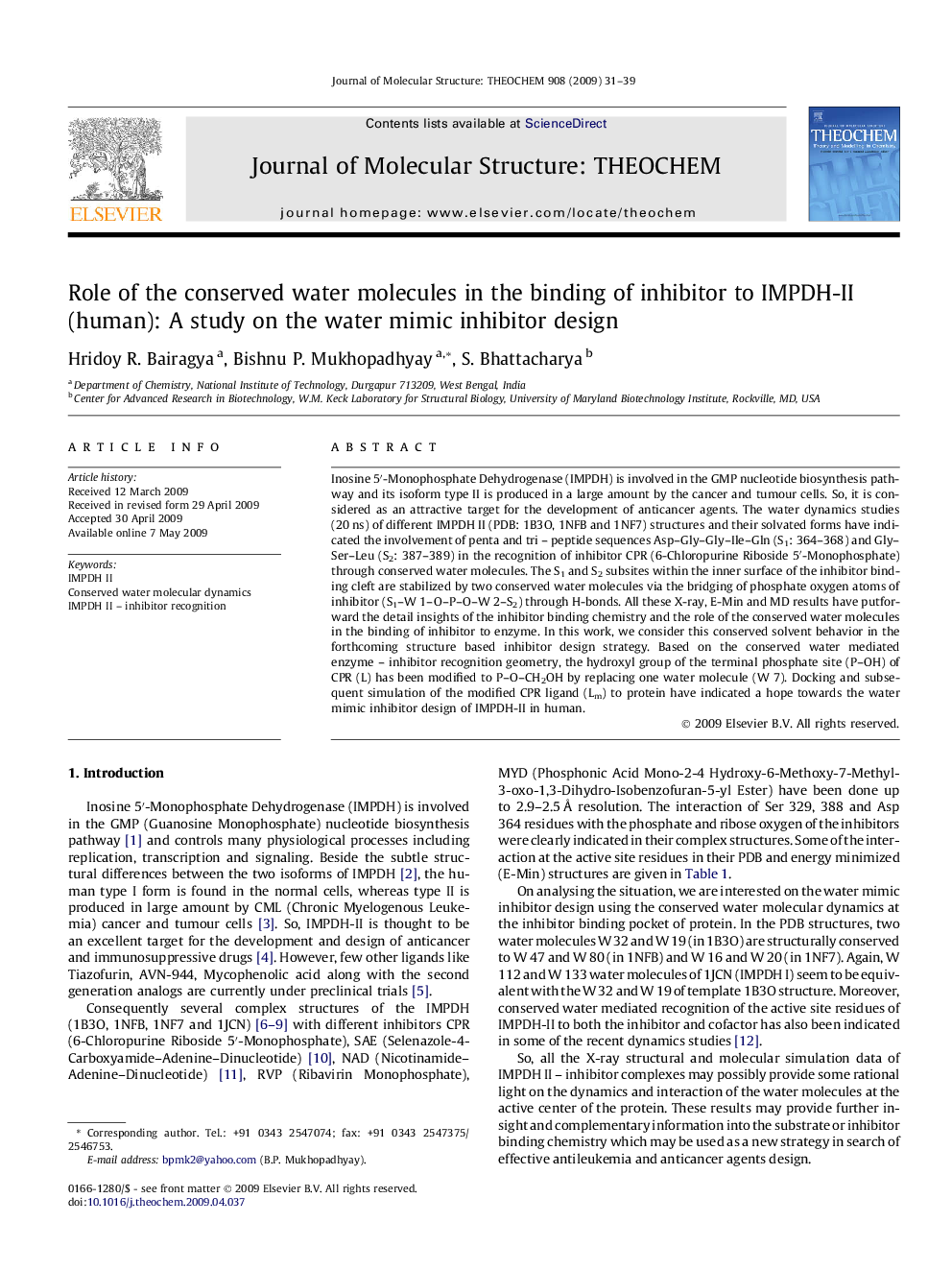| Article ID | Journal | Published Year | Pages | File Type |
|---|---|---|---|---|
| 5417174 | Journal of Molecular Structure: THEOCHEM | 2009 | 9 Pages |
Abstract
Inosine 5â²-monophosphate dehydrogenase (IMPDH) is involved in the GMP nucleotide biosynthesis pathway and its isoform type II is produced in a large amount by the cancer and tumour cells. So, it is considered as an attractive target for the development of anticancer agents. The water dynamics studies (20Â ns) of different IMPDH-II (PDB: 1B3O, 1NFB and 1NF7) structures and their solvated forms have indicated the involvement of penta and tri - peptide sequences Asp-Gly-Gly-Ile-Gln (S1: 364-368) and Gly-Ser-Leu (S2: 387-389) in the recognition of inhibitor CPR (6-Chloropurine Riboside 5â²-monophosphate) through conserved water molecules. The S1 and S2 subsites within the inner surface of the inhibitor binding cleft are stabilized by two conserved water molecules via the bridging of phosphate oxygen atoms of inhibitor (S1-W 1-O-P-O-W 2-S2) through H-bonds. All these X-ray, E-min and MD results have putforward the detail insights of the inhibitor binding chemistry and the role of the conserved water molecules in the binding of inhibitor to enzyme. In this work, we consider this conserved solvent behavior in the forthcoming structure based inhibitor design strategy. Based on the conserved water mediated enzyme - inhibitor recognition geometry, the hydroxyl group of the terminal phosphate site (P-OH) of CPR (L) has been modified to P-O-CH2OH by replacing one water molecule (W 7). Docking and subsequent simulation of the modified CPR ligand (Lm) to protein have indicated a hope towards the water mimic inhibitor design of IMPDH-II in human.
Related Topics
Physical Sciences and Engineering
Chemistry
Physical and Theoretical Chemistry
Authors
Hridoy R. Bairagya, Bishnu P. Mukhopadhyay, S. Bhattacharya,
